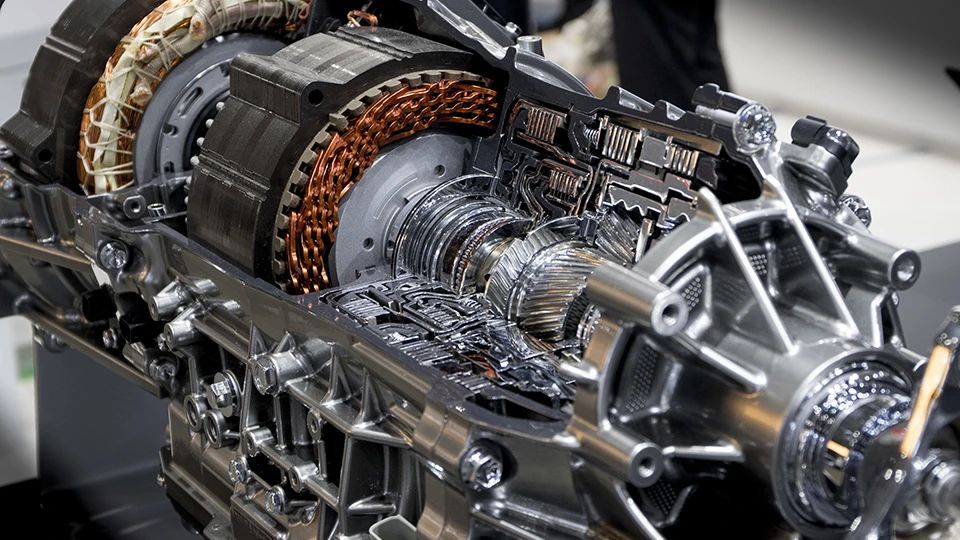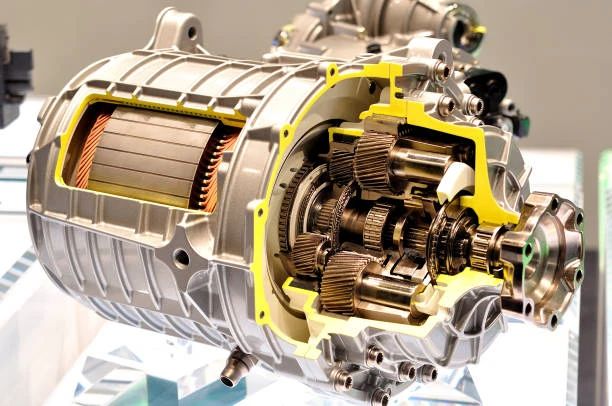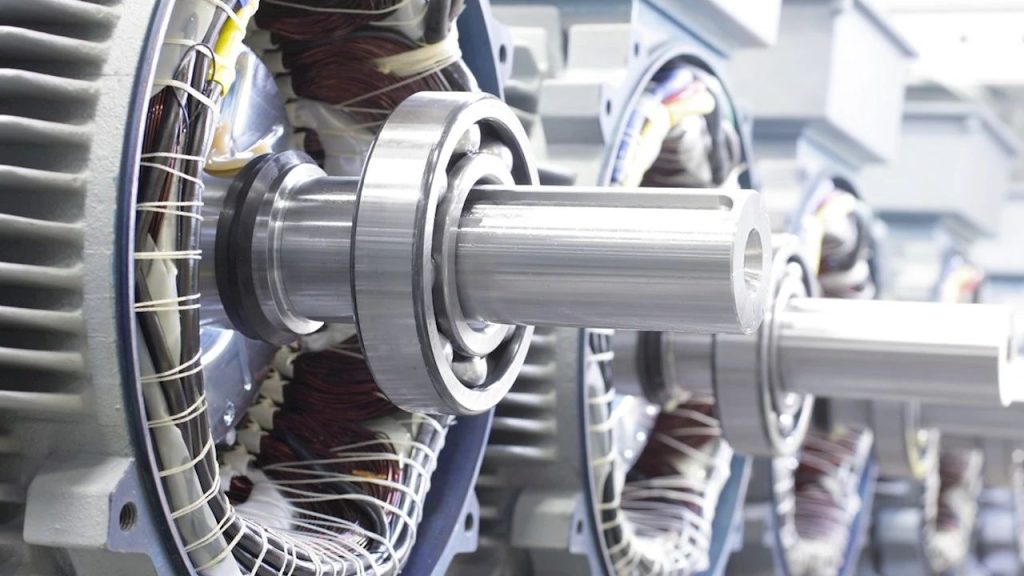How Permanent Magnet Motors Captured Modern Technology?
As always, permanent magnet motors (PM motors), as the leader in the field of magneto-electricity, have been attracting the attention of many energy technology enthusiasts. The amazing thing about this kind of motor is that it utilizes permanent magnets to generate a magnetic field, which requires neither an excitation coil nor an excitation current, and the power density and high efficiency is even more remarkable, and the structure is relatively simple. It is reported that, with the continuous introduction of high-performance permanent magnet materials and the rapid development of control technology, the application of permanent magnet motors will become more widespread, bringing more and more efficient energy-saving changes for our society and life to bring more positive impact.

History of permanent magnet motors
In the history of the development of permanent magnet motors, permanent magnet materials play a crucial role. As early as two thousand years ago, the magnetic properties of permanent magnet materials were discovered and applied to the manufacture of compasses, which played an indispensable role in navigation and military fields. However, it was not until the 1820s that the world’s first electric motor was born, which was a permanent magnet motor with an excitation field generated by a permanent magnet. However, the permanent magnet material used at that time was only natural magnetite stone (Fe3O4), whose magnetic energy density was very low, so the motor made was bulky, and was soon replaced by an electrically excited motor. Nowadays, with the introduction of high-performance permanent magnet materials and the rapid development of control technology, permanent magnet motors rejuvenate its vitality, will play a more extensive role in all walks of life, and become a leader in energy saving and emission reduction.
With the needs of industrial development and the promotion of scientific and technological innovation, people’s research on permanent magnet materials has entered a new stage. From the ancient compass to the permanent magnet motor at the beginning of the 20th century, permanent magnet materials have been accompanying the course of human development. However, the initial permanent magnet materials were not satisfactory, with low magnetic energy density, which limited the further development of permanent magnet motors. It was not until the 1930s that Alnico permanent magnets and ferrite permanent magnets were introduced in the 1950s that this problem was solved to some extent. But they were still very limited and could not meet the demand for higher power and smaller size motors. It was not until the 1960s and 1980s that the emergence of rare earth cobalt permanent magnets and neodymium-iron-boron permanent magnets revolutionized the face of permanent magnet motors. These two types of permanent magnet materials have excellent magnetic properties such as high remanent magnetic density, high coercivity, high magnetic energy product and linear demagnetization curve, which makes the application range of permanent magnet motors greatly expanded. Therefore, we can say that the introduction of rare-earth permanent magnets marks the entry of permanent magnet motors into a new historical period, and also predicts that the future of permanent magnet motors will be broader.

Characteristics and applications of permanent magnet motors
Permanent magnet motors, especially rare earth permanent magnet motors, are a breath of fresh air in the field of motors. Compared with traditional electrically excited motors, permanent magnet motors are not only simple in structure and reliable in operation, but they are also small in size, light in quality, low in loss and high in efficiency, making them simply an all-rounder. The shape and size of this guy is also very flexible, giving a feeling of driving a god. Therefore, permanent magnet motors in aerospace, national defense, industrial and agricultural production, and even daily life are widely used, simply a young and old all-rounders.
Now, let’s take a look at the main features of several typical permanent magnet motors and their main applications. First of all, rare-earth permanent magnet generator is a good choice, which does not need collector ring and brush device compared with the traditional generator, which not only simplifies the structure, but also reduces the failure rate. What’s more, the use of rare earth permanent magnets can also increase the air gap magnetism, so that the motor speed can be increased to the optimal value, thus improving the power to mass ratio. Modern aviation and aerospace generators almost all use rare-earth permanent magnet generators, such as the United States General Electric Company manufactured 150 kVA 14-pole 12 000 r/min ~ 21 000 r/min and 100 kVA 60 000 r/min rare-earth cobalt permanent magnet synchronous generators.
In addition to rare earth permanent magnet generator, permanent magnet generator can also be used as a large-scale turbine generator sub-exciter. In the 80’s, China successfully developed the world’s largest capacity of 40 kVA ~ 160 kVA rare earth permanent magnet sub-exciter, equipped with 200 MW ~ 600 MW turbine generator greatly improves the reliability of power plant operation. In addition, independent power supply with internal combustion engine driven small generators, automotive permanent magnet generators, wind turbines directly driven by small permanent magnet wind turbine generators are also being gradually promoted.
Rare earth permanent magnet motors have a wide range of applications, from the textile and chemical fiber industry to coal mine transportation machinery, to the automotive field, everywhere. According to statistics, about 70% of cars with rare earth permanent magnet motors, limousines are equipped with more than 70 sets of motors. And in the future, automotive components such as air conditioners, fans and power windows will also use motor magnets, while ignition coils, drives and sensors will still use Sm-Co sintered magnets. In addition, the application areas of rare-earth permanent-magnet motors are expanding, such as support in new low-power rare-earth permanent-magnet synchronous-motor inverter speed-regulation systems for air conditioners and refrigerators, as well as in cordless motorized gadgets for a wide range of rare-earth permanent-magnet DC micromotors.
The advantages of rare earth permanent magnet materials lie in their high performance and wide range of application areas, especially in the aerospace field where they have important development prospects. Although rare-earth permanent magnet motors have been involved in airborne applications, its main application is in the new generation of aero-engines. However, high cost is still a challenge for rare-earth PM motors, while ferrite PM motors are widely used because of their simple structure, light weight, and lower total cost than electrically excited motors. However, in some special applications, such as voice coil motors for computer disk drives, the use of NdFeB permanent magnet materials can improve performance, reduce size and mass, and thus reduce total cost instead. When designing and selecting motors, it is important to consider factors such as performance, price and cost for innovation and design optimization to achieve a wider range of applications.

Types and characteristics of permanent magnet motors
Nowadays, permanent magnet motors such as rare earth permanent magnet motors have become the “favorite” in the field of motors. Compared with the traditional electrically excited motors, they have the advantages of simple structure, reliable operation, small size, light weight, low loss, high efficiency and many other superb advantages. Even better, they can be flexibly molded into a variety of shapes and sizes, really full of personality! In contrast, ordinary motors require an electric current to maintain a magnetic field, which is a lot of work! However, permanent magnet motors are not the only type of motor, they also have permanent magnet DC motors, asynchronous starting permanent magnet synchronous motors, permanent magnet brushless DC motors, speed-regulated permanent magnet synchronous motors and permanent magnet synchronous generators, and other five conventional partners, is really multi-talented.
Permanent magnet motors have the following main features:
1.Permanent Magnet DC Motor
People who are engineers, have you ever thought of replacing the old excitation DC motor with a more efficient, lighter and simpler structure motor? That’s right, I am talking about the permanent magnet DC motor! Compared to the old motor, the permanent magnet DC motor eliminates the complex excitation winding and pole core, and instead uses permanent magnet poles to generate the magnetic field. Such a motor is not only similar to the characteristics of his excitation DC motor, but also has a simple structure, reliable operation, high efficiency, small size, light weight and other characteristics. It is the meat and potatoes in the minds of engineers!
2.Asynchronous starting permanent magnet synchronous motor
This guy is not only a permanent magnet synchronous motor, but also has the characteristics of the induction motor and electro-excitation synchronous motor, you can start Oh! You may ask, how is this realized? In fact, it is very simple, it uses the asynchronous torque generated by the interaction between the stator rotating magnetic field and the cage rotor to realize the starting. When it is running normally, the rotor speed and rotating magnetic field synchronization, the cage rotor will no longer play a role. This guy is really great, not only good for starting, but also high efficiency when running, the working principle and the electro-excited synchronous motor is basically the same. I have to say, the wisdom of engineers is really endless!
With induction motor is very different! It has a constant speed, high power factor, or even super power factor, which not only reduces the resistance loss, but also effectively reduces the fan friction and copper consumption loss, and improves the efficiency. What’s more, it has a wide economic operating range, capable of maintaining high efficiency and high power factor both at rated load and at light loads. In addition, permanent magnet motors are much smaller and heavier than induction motors, yet they have a minimal impact on the power grid. Of course, it has its drawbacks, such as higher price and irreversible demagnetization, but this does not overshadow its many advantages.
3. Permanent magnet brushless DC motor
Permanent magnet brushless DC motor, by electronic commutation device to realize the replacement of brush commutator, retaining the excellent characteristics of DC motor. Its structure is simple, reliable, easy to maintain, and at the same time, it has the characteristics of DC motor with large starting torque and good speed regulation performance. Compared with the traditional DC motor, the reliability is greatly improved by eliminating the brush commutator; at the same time, the loss is mainly generated by the stator, the heat dissipation conditions are optimized, and the volume and weight are greatly reduced. Thus, the permanent magnet brushless DC motor can be said to be a combination of AC and DC motors, realizing the “advantages of one” of the perfect realm.
4. Speed-regulated permanent magnet synchronous motor
Let’s talk about speed permanent magnet synchronous motor and permanent magnet brushless DC motor. These two guys look basically the same, there are multiphase windings on the stator and permanent magnets on the rotor, and the advantages are similar. But what is the difference between them? It really lies in the fact that permanent magnet brushless DC motors are able to synchronize based on rotor position information, while speed-regulated permanent magnet synchronous motors require a set of electronic control systems in order to synchronize and speed-regulate. Well, it looks like this electronic control system is a bit powerful. However, there are a lot of benefits, after all, the abolition of the commutator, reliability has greatly improved; and stator loss is mainly heat dissipation problems, unlike other motors so annoying; most importantly, its size and weight are very small, simply a “small and exquisite” guy.
5. permanent magnet synchronous generator
Permanent magnet synchronous generator! It is a unique structure of the generator, unlike other synchronous generators, it uses permanent magnets to establish a magnetic field, completely eliminating the need for excitation windings, excitation power supply, collector rings and brushes and other components, is simply too convenient! Not only that, permanent magnet synchronous generators can operate stably and efficiently without much maintenance. If rare-earth permanent magnet material is used, not only the air gap magnetic density is high, the power density is also high, the volume is small, the quality is light, which perfectly meets the modern demand for compactness and efficiency. However, since it uses permanent magnets to establish a magnetic field, it is difficult to regulate the output voltage and reactive power by adjusting the excitation. In addition, permanent magnet synchronous generators usually use neodymium-iron-boron or ferrite permanent magnets, which have high temperature coefficients, and the output voltage varies with the ambient temperature, which can cause the output voltage to deviate from the rated voltage.